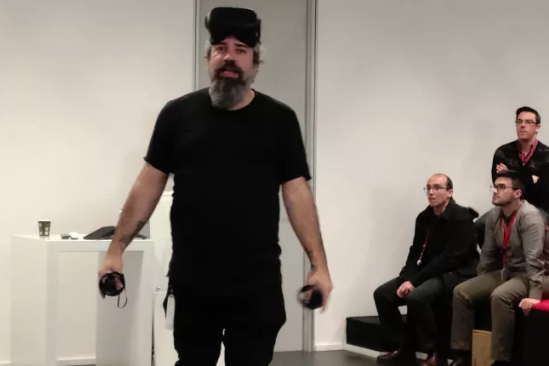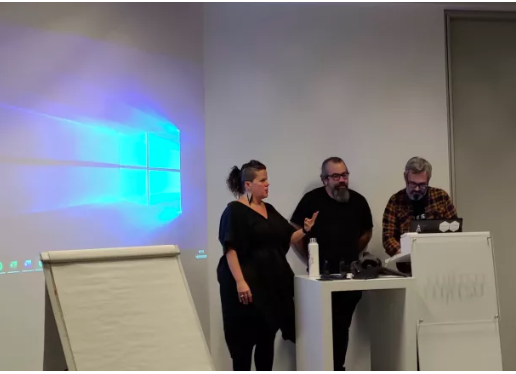By David Nedohin, co-founder and Chief Customer Officer at Scope AR
We are all facing unprecedented challenges in our lives and at work due to the impact of Covid-19. With much of the world being asked to shelter in place, we’re all looking for ways to reinvent how we get the work done to serve our customers, our companies, and all the people who work for them. It’s becoming clear that we will all be increasingly reliant on the tools and technology that keeps businesses connected to its customers and stakeholders. Now more than ever, we’re all in this together, and communication is vital.
As we find new ways to stay connected, I am very optimistic enterprises will find ways to speed innovation and rethink business-as-usual. At Scope AR, we’re committed to helping our customers leverage AR where possible as a tool for keeping essential operations moving forward. Over the past six weeks, we’ve seen that take on many forms such as virtual workforce training, remote expert assistance being used to guide factory equipment repairs and maintenance procedures, as well as the use of intuitive AR work instructions to help manufacturers stick to production timelines as best as possible.
We will continue to spotlight successful AR deployments and share lessons learned and best practices so that other enterprises have real-world examples of how augmented reality can be used to solve complex business challenges. I recently had a great discussion with Walter Davis at Aggreko. Walter was kind enough to share three takeaways from an AR remote employee training project now underway.
Aggreko brings power, energy storage, heating & cooling to sites around the world. Their generators help power emergency services, hospitals, and other major events. Aggreko’s products ensure that manufacturers and construction sites can keep production on track and maintain efficiency. They also work with the utility industry to ensure power keeps flowing to their customers.
With more than 200 locations of its own worldwide, Aggreko can deploy its equipment to any part of the globe. In their over 50 years in business, they’ve powered everything from massive hurricane recovery sites to global mega-events like the 2012 Olympics in London and FIFA World Cup events.
As the Head of Talent and Learning Technology at Aggreko, Walter is always looking for new ways to build expertise across the company’s workforce deploying Aggreko products — wherever and whenever their customers need them. Given the current limitations to travel, the need for delivering digital training knowledge has gone from a “nice to have” to ‘mission critical’ from an operational standpoint. He’s been a champion at the company for the use of AR to train employees on its 1600 CFM diesel compressor – a massive piece of equipment that weighs 12 tons and is 20 feet long.
Aggreko built an AR training program using the Scope AR WorkLink platform to create a virtual, full-sized model of the compressor. “They can do a full walk-around,” Walter said, noting the experience is an “immersive training on a life-sized, full-scale model of our product.” Employees can get familiar with controls, key features, and components.
The AR experience also shows how to turn on or decommission the equipment, as well as how to conduct essential maintenance procedures like changing out fuel and oil filters. To deliver the AR experience, they’re using devices their workforce already carries – like smart phones and tablets – so no additional hardware investment is needed. This means training is now available wherever their workers are. As an added bonus, physical equipment doesn’t have to be taken away from a job site, which is a huge cost savings for Aggreko.
Here are three takeaways Walter said he learned from this initial AR deployment that might resonate with other businesses considering AR as a reliable and scalable way to train and share expert knowledge amongst their workforce:
1. AR reinvents and optimizes an essential process. To train its workers on the 1600 compressor, Aggreko used to fly them to training centers all over the globe to get face-to-face and hands-on training with the equipment. This model is costly and inefficient. AR can bring distance learning to the workforce, not the other way around.
2. AR helps unlock tangible ROI. To train in-person, Aggreko has to ship its massive compressors to training centers. In addition to considerable shipping costs, they can’t use that equipment out on a customer site. Walter estimates that they would be saving $500K if AR was used in place of physical products for all current technical programs.
3. Companies can help speed innovation across their business. Walter notes that while the plan was always to scale from the 1600 compressor experience to create training experiences for other pieces of Aggreko equipment, the challenges brought on by the Covid-19 pandemic have definitely accelerated this process. As the company has currently banned all non business-critical in person training and business travel, they are quickly building processes and creating content to distribute worldwide so that employees can continue to receive the training and knowledge they need to deliver an optimal experience to their customers.
Uncertain times like these spur innovation in using new technologies and how we do our work to keep things moving forward. Just as Aggreko is transforming its workforce training, we undoubtedly will see other businesses figuring out new ways to leverage technology to help navigate these volatile times. Learn more about Aggreko and the work they’re doing to power business across the globe.
CONTACT
Brittany Edwards
brittany@carvecom.com
210-382-2165











